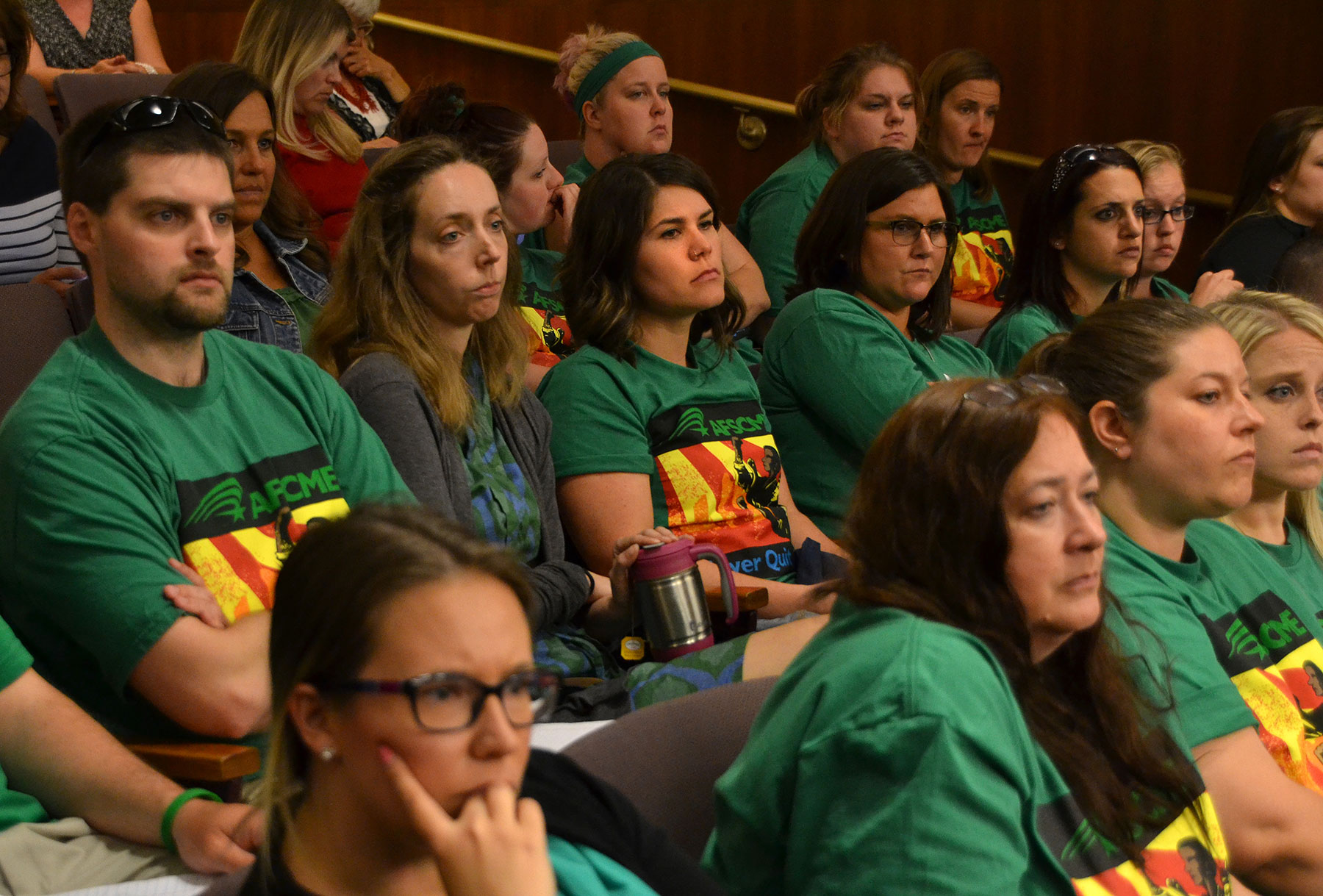

Share
When child protection workers look for a safe place for children who are experiencing abuse or neglect, they don’t always have somewhere to go.
The number of kids in foster care on an average day jumped 51 percent in just three years, according to the Minnesota Department of Human Services.
While counties are trying to recruit more foster families, progress is slow. And the shortage of shelters and foster homes is leading to tough choices for children, families and the workers who try to keep kids safe.
“We are seeing a huge increase of frustration with our foster parents, and we have lost some very good foster parents to these frustrations,” says St. Louis County child foster care licensor Melissa Ostrofsky of AFSCME Local 66. “The stress level of foster parents and workers is steadily and consistently increasing, and there is no relief in sight.”
More kids are coming into emergency shelters, they’re staying in shelters longer, more relatives are being licensed to take in kids and more children are being placed outside their counties. Some kids even have to stay longer with their parents – after a judge has determined it’s unsafe – until a space becomes available.
“Shelters are good because they keep kids safe,” says Kevin Feldt, a foster care licensing worker and former child protection case manager in St. Louis County. “But the big goal when kids are in foster care is to give them as much normalcy as we can. Not being in a home environment is a big detriment.”
The shortage in foster homes is made even more challenging by rising caseloads. A recent reform of the child protection system led to an influx of abuse and neglect reports, which doubled and even tripled the recommended caseload of child protection workers across the state.
That influx has hit foster care licensing, too. In southern St. Louis County, for example, licensors now have an average caseload of 50 homes; the recommended number is 35. Licensing just one home to ensure it’s a safe and stable environment can take three to 12 months and from six to 10 visits, Ostrofsky says.
“The children and families we serve are the ones suffering from the impact of increased caseloads and a lack of supportive resources,” she says. “The social workers in St. Louis County are passionate and committed to helping children and families. We do our best to meet family’s and children’s needs. When caseloads are high, we simply do not have enough time to give families and children the assistance they need to improve the quality, safety and stability of their lives.”
Typically, workers in child protection and licensing act something like matchmakers, says Hennepin County child protection social worker Brenda Louise of Local 34. The foster care licensor offers up homes that seem like a good fit and works closely with the child protection worker to determine the best pick. Often children get to visit a potential foster family first.
“With the shortage, there are occasions I have to tell a child this is where you’re going because there are no options,” Louise says.
Sometimes workers have to place children in other counties or even across the state.
“I’ve had children placed through a private agency a couple hours away,” says Liz Siebenaler, a social worker in St. Louis County’s Initial Intervention Unit who previously served as a child protection case manager and in child foster care licensing. “We try not to do that. It’s really hard to do visits with parents when the kids are placed far away.
Sometimes they get split from their siblings, sometimes they have to change schools.
“I know it’s frustrating,” Siebenaler adds. “Parents want their kids together if they can’t be with them. They want their kids in their community. It adds to a traumatizing situation and escalates it.”
When workers have to find services in a different county they’re not as familiar with, there can be problems with insurance and delays in getting services, Louise says. Each added step takes more time for workers, who are already slammed.
The shortage of foster homes means children of color are more likely to be placed in predominantly white communities.
“We know that cross-cultural placements can leave children of color with damaged self-identities,” Louise says. “You want to try to compensate by having them at least have mentors and teachers and therapists of their background. That can be very hard to find for kids placed in Greater Minnesota.”
Ostrofsky lists multiple other factors that are driving foster families away:
- Low reimbursement rates for foster parents, who have to get children – who often require a high level of attention and care for the trauma they’ve suffered – to school, therapy, medical and dental appointments and visitation.
- Increasing Minnesota Department of Human Services requirements for licensing, training and paperwork.
- Increased liability for taking in kids with greater mental health needs, aggression and other issues.
- The rising cost of daycare. Only one-third of the cost is reimbursed, leaving some foster parents with less than $1 a day to raise a child after paying for daycare and diapers, Ostrofsky says.
Add in rising caseloads, Louise says, “And you can imagine what this does for the foster parent. They don’t get as much help. They don’t get as much support. More and more foster parents are falling by the wayside. They say, ‘I can’t function, I can’t help these kids with so little support.’
“It’s like a snowball effect where everything kind of gets stretched thin,” she says.
Reprinted from the website of AFSCME Council 5.

